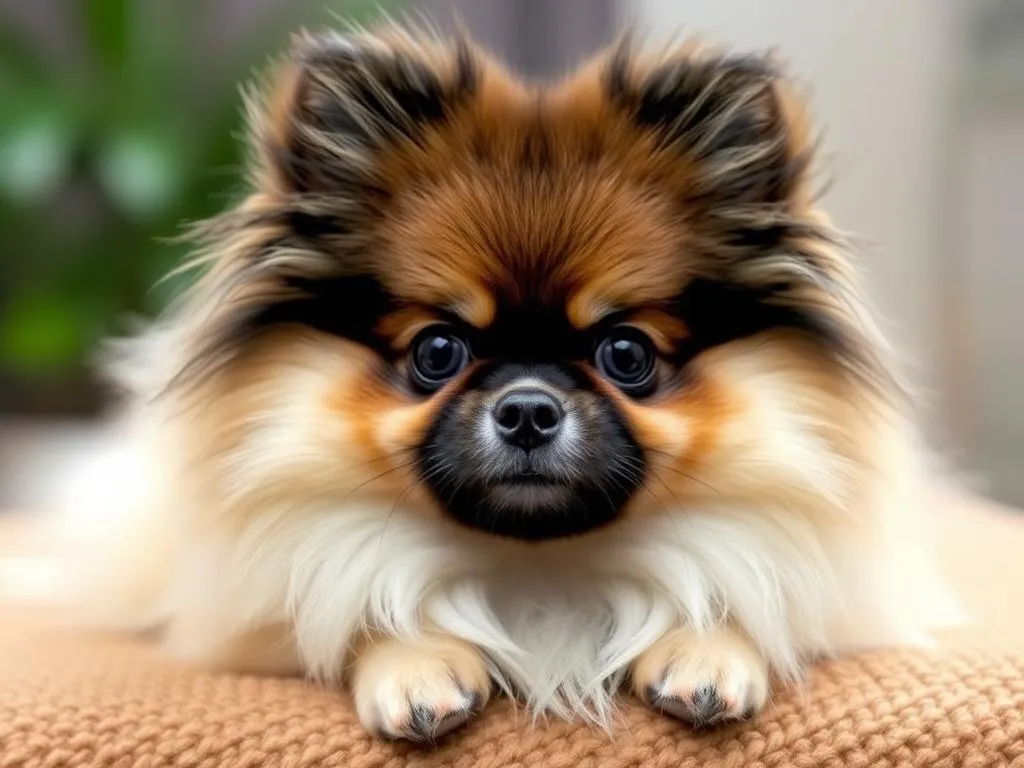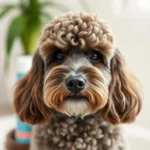
Grooming is an essential part of caring for your Pomeranian. This small, spirited breed not only boasts a stunning double coat, but proper grooming also plays a significant role in their overall health and well-being. In this guide, we will explore how to groom a pomeranian effectively, ensuring your furry friend stays happy, healthy, and looking their best.
Understanding Pomeranian Coat and Skin Health
Characteristics of Pomeranian Fur
Pomeranians have a unique double coat comprised of a soft, fluffy undercoat and a longer, harsher outer coat. This double-layer structure helps insulate them and protects their skin from various environmental factors. Typically, Pomeranians come in a variety of colors, including orange, black, chocolate, cream, blue, and sable, often displaying beautiful patterns that can include brindle or merle.
Common Skin Issues in Pomeranians
Despite their adorable appearance, Pomeranians can be prone to several skin issues, such as:
- Allergies and Sensitivities: Pomeranians may suffer from allergies to food, pollen, or dust, leading to itchy skin and discomfort.
- Parasites: Fleas and ticks are common culprits that can cause skin irritation and infections.
- Skin Infections and Hot Spots: Moisture and dirt can lead to bacterial infections or hot spots, which are areas of inflamed skin.
Being aware of these issues helps you take proactive measures during grooming sessions.
The Importance of Regular Grooming
Benefits of Grooming for Health
Regular grooming is vital for maintaining your Pomeranian’s health. This routine helps:
- Prevent Matting and Tangles: Pomeranian fur can easily become matted if not properly brushed, leading to discomfort and skin problems.
- Detection of Skin Problems Early: While grooming, you can check for any signs of skin issues, such as lumps, bumps, or irritation, allowing for timely intervention.
Grooming and Bonding
Grooming your Pomeranian is not just a health necessity; it also fosters a strong bond between you and your pet. Regular grooming routines can build trust and comfort, making your dog more relaxed during the process.
Essential Grooming Tools for Pomeranians
Brushes and Combs
Choosing the right tools is crucial when learning how to groom a pomeranian.
- Types of Brushes: A slicker brush is ideal for removing loose fur and preventing tangles, while a bristle brush can help smooth the coat and add shine.
- Choosing the Right Comb: A wide-toothed comb is perfect for detangling, especially around sensitive areas like the face and ears.
Bathing Supplies
Bathing your Pomeranian is another integral part of grooming.
- Recommended Shampoos and Conditioners: Look for gentle, dog-specific shampoos and conditioners that are formulated for sensitive skin.
- Importance of Hypoallergenic Products: Using hypoallergenic products can help prevent allergic reactions, especially for dogs with sensitive skin.
Clippers and Scissors
When grooming a Pomeranian, you may need clippers and scissors.
- Types of Clippers: Choose clippers designed for small breeds to manage the thickness of a Pomeranian’s coat effectively.
- Safety Tips: Always use rounded-tip scissors for trimming fur around sensitive areas like the ears and paws to avoid accidental cuts.
Step-by-Step Guide on How to Groom a Pomeranian
Preparing for Grooming
Before you begin grooming, ensure you have a comfortable space set up. A non-slip surface, such as a grooming table or a towel on the floor, is ideal. It’s important that your Pomeranian feels calm and relaxed; consider playing with them or giving them a treat to ease any anxiety.
Brushing the Coat
To effectively brush your Pomeranian’s coat:
- Techniques for Brushing: Start with the undercoat using a slicker brush. Gently work through tangles, ensuring not to pull on the skin. Follow up with a bristle brush to smooth the outer coat.
- Frequency of Brushing: Aim to brush your Pomeranian at least two to three times a week. During shedding season, daily brushing may be necessary.
Bathing the Pomeranian
Bathing is an essential aspect of grooming.
- Ideal Frequency for Baths: Pomeranians typically need baths every four to six weeks, depending on their activity levels and exposure to dirt.
- Step-by-Step Bathing Process:
- Brush your dog thoroughly to remove any tangles.
- Use lukewarm water and wet their coat, avoiding the face initially.
- Apply a small amount of shampoo, lather, and rinse thoroughly.
- Follow up with conditioner for added moisture.
- Rinse well to ensure no product residue remains.
Drying and De-shedding
After bathing, drying your Pomeranian properly is vital.
- Methods for Drying: Use a clean, absorbent towel to remove excess water. If your dog is comfortable with it, a low-heat pet dryer can be used. Keep the dryer at a safe distance to avoid overheating their skin.
- Tools for Effective De-shedding: A de-shedding tool can help remove loose fur, especially during shedding season.
Trimming and Clipping
Trimming is an essential part of grooming, especially for maintaining a tidy appearance.
- How to Safely Trim Fur: Focus on areas like the paws, tail, and around the ears. Always use scissors with rounded tips and proceed slowly.
- Techniques for Clipping Nails and Cleaning Ears: Regularly check and trim your Pomeranian’s nails, aiming for every 3-4 weeks. Use a nail clipper designed for small breeds. For ear cleaning, gently wipe the outer ear with a damp cotton ball, avoiding inserting anything into the ear canal.
Post-Grooming Care
Checking for Skin Issues
After grooming, take the time to check for any potential skin issues.
- Signs to Look for After Grooming: Look for any redness, irritation, or unusual lumps during your grooming session. Be especially vigilant in areas where mats were removed.
- When to Consult a Veterinarian: If you notice anything concerning, such as persistent itching, redness, or unusual growths, consult your veterinarian promptly.
Maintaining a Grooming Schedule
Establishing a grooming routine will keep your Pomeranian healthy and comfortable.
- Recommended Grooming Frequency: Depending on their coat type, Pomeranians may require different grooming frequencies. Generally, a full grooming session every 4-6 weeks is advisable.
- Tips for Establishing a Routine: Set specific days for grooming and stick to the schedule. Consistency helps your Pomeranian become accustomed to the process and reduces anxiety.
Professional Grooming vs. DIY Grooming
When to Consider Professional Grooming
While DIY grooming is beneficial, there are times when professional help may be necessary.
- Situations Where Professional Help is Beneficial: If your Pomeranian has severe matting or if you’re uncertain about grooming techniques, a professional groomer can assist.
- Costs Associated with Professional Grooming: Professional grooming can vary in cost, typically ranging from $30 to $100, depending on the services provided and your location.
DIY Grooming Tips for Home Groomers
Grooming your Pomeranian at home has its advantages.
- Advantages of Grooming at Home: Home grooming can save money and allows you to bond with your pet. You can also tailor the grooming process to your dog’s specific needs.
- Resources for Learning Proper Techniques: There are numerous online resources, including videos and articles, that can help you refine your grooming skills and techniques.
Conclusion
Grooming is a vital component of maintaining your Pomeranian’s health and happiness. By understanding how to groom a pomeranian properly, you can prevent health issues, strengthen your bond, and ensure that your furry friend remains comfortable and stylish. Incorporating regular grooming into your care routine is an investment in your dog’s quality of life, making it essential for every Pomeranian owner.
Taking the time to learn and practice effective grooming techniques will not only enhance your Pomeranian’s appearance but also contribute significantly to their overall well-being and happiness.









